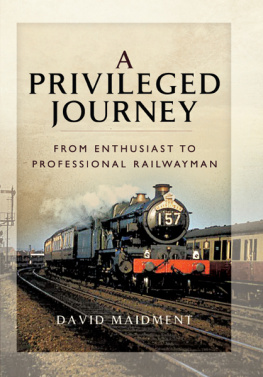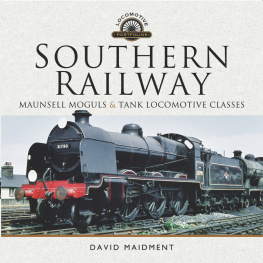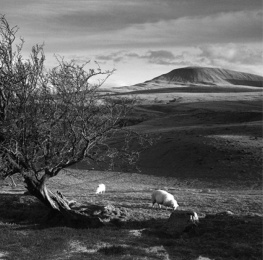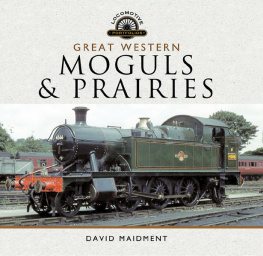David Maidment - A Privileged Journey
Here you can read online David Maidment - A Privileged Journey full text of the book (entire story) in english for free. Download pdf and epub, get meaning, cover and reviews about this ebook. year: 2015, publisher: Pen & Sword Books, genre: Non-fiction. Description of the work, (preface) as well as reviews are available. Best literature library LitArk.com created for fans of good reading and offers a wide selection of genres:
Romance novel
Science fiction
Adventure
Detective
Science
History
Home and family
Prose
Art
Politics
Computer
Non-fiction
Religion
Business
Children
Humor
Choose a favorite category and find really read worthwhile books. Enjoy immersion in the world of imagination, feel the emotions of the characters or learn something new for yourself, make an fascinating discovery.
- Book:A Privileged Journey
- Author:
- Publisher:Pen & Sword Books
- Genre:
- Year:2015
- Rating:4 / 5
- Favourites:Add to favourites
- Your mark:
- 80
- 1
- 2
- 3
- 4
- 5
A Privileged Journey: summary, description and annotation
We offer to read an annotation, description, summary or preface (depends on what the author of the book "A Privileged Journey" wrote himself). If you haven't found the necessary information about the book — write in the comments, we will try to find it.
A Privileged Journey — read online for free the complete book (whole text) full work
Below is the text of the book, divided by pages. System saving the place of the last page read, allows you to conveniently read the book "A Privileged Journey" online for free, without having to search again every time where you left off. Put a bookmark, and you can go to the page where you finished reading at any time.
Font size:
Interval:
Bookmark:

Painting by railway artist David Charlesworth, commissioned by the author, of 30777 Sir Lamiel on the 5.9pm WaterlooBasingstoke passing Surbiton, February 1960.
Cover: 4087 Cardigan Castle at Reading West on the down Mayflower, the 5.30pm PaddingtonPlymouth, April 1958. (R. C. Riley)
All photographs in the book are by the author, except where otherwise credited.
First published in Great Britain in 2015 by
Pen & Sword Transport
An imprint of Pen & Sword Books Ltd
47 Church Street, Barnsley South Yorkshire S70 2AS
Copyright David Maidment 2015
The right of David Maidment to be identified as the author of this work had been
asserted by him in accordance with the Copyright, Designs and Patents Act 1988.
All rights reserved. No part of this publication may be reproduced or transmitted in
any form or by any means, electronic or mechanical, including photocopy, recording
or any information storage and retrieval system, without the prior written permission
of the publisher, nor by way of trade or otherwise shall it be lent, re-sold, hired out
or otherwise circulated without the publisher's prior consent in any form of binding
or cover other than that in which it is published and without a similar condition
including this condition being imposed on the subsequent purchaser.
ISBN: 9781783831081
EPUB ISBN: 9781473859494
PRC ISBN: 9781473859487
Pen & Sword Books Ltd incorporates the imprints of Pen & Sword Archaeology,
Atlas, Aviation, Battleground, Discovery, Family History, History, Maritime,
Military, Naval, Politics, Railways, Select, Social History, Transport, True Crime, and
Claymore Press, Frontline Books, Leo Cooper, Praetorian Press, Remember When,
Seaforth Publishing and Wharncliffe.
For a complete list of Pen and Sword titles please contact
Pen and Sword Books Limited
47 Church Street, Barnsley, South Yorkshire, S70 2AS, England
E-mail:
Typeset by Milepost
Printed and bound by Imago Publishing Limited
All royalties for this book will be donated to the Railway Children charity
(reg no. 1058991)
(www.railwaychildren.org.uk)
Acknowledgements
To those who stimulated and shared my interest in railways and especially the steam engine - my father, Jack Maidment, Great Uncle George, Aunt Enid, Cedric Utley, John Crowe, Alastair Wood
Contents
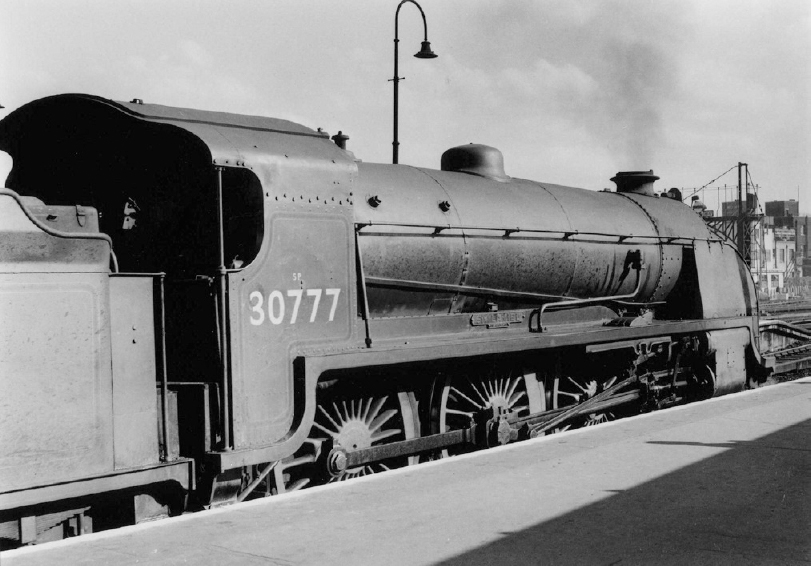
Ready for departure 30777 Sir Lamiel at Waterloo on the 5.9pm to Basingstoke, May 1960.
Preface

David Charlesworths representation of 4087 Cardigan Castle on Llanvihangel Bank with a PlymouthManchester express c1963 a painting commissioned by the author and used on a Christmas card for the Railway Children charity.
T his book has been written for fellow railway enthusiasts particularly those seduced by the magic of the steam locomotive. For some, hopefully these chapters will elicit similar memories and permit them to revel in unashamed nostalgia. For others perhaps those who were not fortunate enough to experience Britains steam railways in their heyday it may give a feel of what it was like to live and work on the railway when Britain had more than 18,000 working steam locomotives. From the age of two I was entranced by railways and their trains. By the time I was eight I was a trainspotter, and by the age of eleven I was being allowed to travel unaccompanied to London to pursue my hobby. Later I decided to turn my hobby into a career.
In 1960 it was still acceptable to admit to being an enthusiast and become a railway manager. For many senior managers at that time it meant that they knew you were motivated, were aware of the basics of the job and had a more than average awareness of the geography of Britains vast railway system. Later, as the new traction began to appear, interest in steam locomotives became a handicap that one had to hide if one was ambitious. Steam locomotives were old-fashioned, and showing an obvious interest in them meant you were backward-looking, not the thrusting, positive young turk that the new generation of managers was seeking. I was nearly removed from the Western Regions management-training scheme in 1962 when my report on the three months training at Old Oak Common had too much to say about the efficiencies or otherwise of the run down of steam, rather than dwelling on the opportunities for quicker dieselisation. Perhaps they should not have sent me to train at a depot that in May 1962 still had 170 steam locomotives and only 20 diesel shunters. The Assistant General Manager, Lance Ibbotson, castigated me for not visiting the new Landore diesel depot within days of taking up my new training schedule in South Wales. The fact that at the time it was just a muddy building site held no excuse. So I became more circumspect about my enthusiasms and survived.
This book relies for some of the chapters on articles Ive written over the years for the monthly magazine Steam World and a couple from Steam Days. Other chapters are entirely new, and all have been added to, amplified or updated. The photographs are from my vast collection taken with relatively cheap black-and-white-print cameras a folding Kodak Brownie with fixed f8 aperture and 1/25sec standard shutter speed, followed in my teenage years by an Ensign Selfix that was still restricted by its slow shutter speed but had a superb lens. In the following pages I recall my experiences and railway training to the end of 1962; the intention is that a second volume will cover the final days of British steam until 1968, followed by a frantic rush round the railways of Europe before steam disappeared there too, and will also explain how my later railway career allowed me to continue to experience steam at home and abroad.
I owe thanks to a large number of people, but Ill select a few for special mention: firstly my parents, for encouraging and then tolerating my hobby, and my wife, Pat, for permitting it to be such an important part of my life; also my childhood friend Cedric Utley, who accompanied me on my earliest train-spotting trips, Martin Probyn, Conrad Natzio, Philip Balkwill, Jim Evans and other members of the intrepid Charterhouse Railway Society, Alistair Wood, who taught me the rudiments of train timing (although he was always sceptical of my accuracy and Western Region bias), Colin Boocock, who encouraged and helped me to write about my experiences, and those BR colleagues who encouraged me in those early days (or at least tolerated my interests) Rodney Meadows, who, as Assistant Train Operating Officer (Bristol), supervised a short work course which opened my eyes to a possible railway career, WR Assistant General Manager George Bowles, who recruited me, and Ray Sims, Shedmaster at Old Oak Common, who indulged my enthusiasm; then, much later, Frank Paterson, who encouraged me to reflect on my railway life by getting me to give several long interviews on tape for the National Railway Museums oral-history archives, recalling many of the experiences that gave rise to this book.
All royalties from this publication will be donated to the Railway Children charity, which I founded in 1995 with the help of colleagues in the railway industry. A description of how this came about and of the work it undertakes can be found in my self-published history of the charity The Other Railway Children
Next pageFont size:
Interval:
Bookmark:
Similar books «A Privileged Journey»
Look at similar books to A Privileged Journey. We have selected literature similar in name and meaning in the hope of providing readers with more options to find new, interesting, not yet read works.
Discussion, reviews of the book A Privileged Journey and just readers' own opinions. Leave your comments, write what you think about the work, its meaning or the main characters. Specify what exactly you liked and what you didn't like, and why you think so.

